Disrupting the Ballet
Armodoxy for Today: Disrupting the Ballet
The annular solar eclipse could not have occurred at a better time for us. It came at a time when we needed to stop and stand in awe. And those of us who witnessed it, did exactly that. We endured a week of news of escalating violence in the Middle-East and imploding war, which fed our skewed understanding of life as some sort of meaningless string of events. And then on Saturday morning, in the skies over our heads, we witnessed a spectacle of light and shadows. Our Moon came between our planet and the Sun in a cosmic ballet which once again took our breath away. At one point, it created, what is referred to as a “ring of fire” with the center of the Sun blacked out and a beautiful and circular ring hovering in the air.
A solar eclipse is a phenomenon which happens every couple of years. This time, it happened over the sliver of the planet that we inhabit here in the Western United States, making its appearance accessible to millions in its path. It is a phenomenon because the size of the moon, and its distance from the surface of our planet and the distance between it and the Sun is such that this small mass can blot out the entirety of the Sun, an object which is 400 times the size of the Moon.
We watched as the Moon danced before the Sun, moving closer and closer to the point of its annular eclipse and then the ring of fire appeared. I couldn’t help but also keep tabs on the time. The eclipse occurred exactly at the point that was predicted by the mathematics of its motion. And at that moment of eclipse, we wake up that this is not by coincidence or by chance. The cosmic ballet is choreographed by the God of the Universe to the second. The proportions, the angles, the time, come together perfectly as only a Perfect Creator could orchestrate. This is the world we are recklessly and negligently playing with, with our wars and our inability to resolve our disputes with anything but bombs and bigger bombs.
It was in the aftermath of the eclipse that I heard a song by Grammy Award winning artist India.Arie Simpson, called “God is for Real.” The timing of this performance was just as profoundly orchestrated for my reference as was my witnessing of the eclipse. At a time when hatred and evil are making headway in this world, we in the Christian community must focus on the wonders of God. This has been the message the Armenian Church has preached to its people during the worst turmoil in their history. And today, it comes to us. Here is an excerpt with an invitation link at the end to hear it in its entirety.
God is for Real by India.Arie
The sweetest honey to the brightest flower
The largest planet to the smallest atom
Snowflakes and the bird kingdom
Smaller THAN the eye can see bigger then the mind can conceive
Heard a man on the radio today, I mean I’m not going to believe in anything that I can’t see and I’ve
been through a lot of hardships in my life ya know ya know in my life
Must confess I disagreed with what he had to say
How he could he not believe that God is real I don’t understand how he could feel that way
When there’s earth, air, water, and fire, so many different flowers, sunshine and rain showers
So many different crystals, ant hills and volcanoes
That’s how I know that God is real. All of this is not by chance. That’s how I know that God is real.
All of this is not by chance.
YouTube Video: God is Real
Songwriters: Drew Ramsey, India Arie Simpson, Shannon B. Sr. Sanders.


